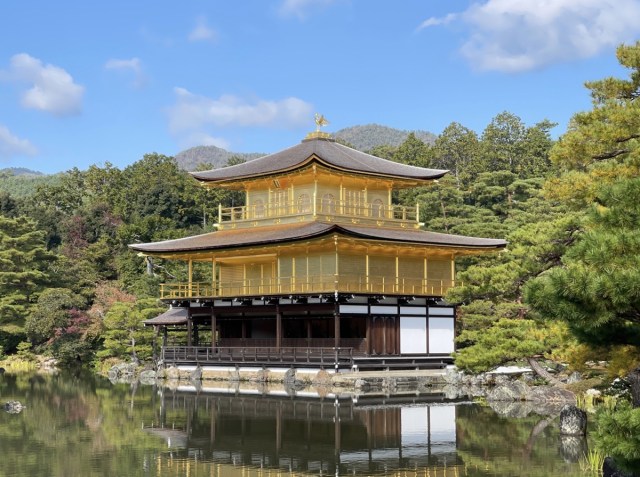
We visit the top tourist sites, and are surprised at what we discover.
In recent years, Kyoto has been buckling under the strain of overtourism, with congestion, bad behaviour, and etiquette problems becoming so widely reported in news reports that some people in Japan now totally avoid going there.
That all changed at the beginning of last year, however, when the coronavirus pandemic shut the country off to international tourism. The normally crowded tourist sites in the ancient capital became a lot quieter, and locals starting visiting again, not only to see the beautiful shrines and temples in the city, but to view them as they used to decades ago, before overtourism stole their quiet beauty.
Now, as the country begins to open up and people start travelling more freely again, there have been mixed reports about the number of tourists in Kyoto, with some reporting that the crowds are back at the city’s magnificent tourist sites.
We decided to take a look for ourselves to see what the crowds are really like right now, so sit back, relax, and join us as we take you on a virtual tour of some of the most popular spots in Kyoto, starting with:
▼ Kinkakuji
Also known as the Golden Pavilion, Kinkakuji is one of the most popular tourist destinations in Kyoto, often topping the list of must-see sites for foreign visitors to the city. The place where visitors congregate is just across the pond from the Pavilion, where people can capture the best photos of the glistening structure and its reflections in the water.
▼ The classic viewing spot is circled below.
It can be shoulder-to-shoulder here at times, especially when big tour buses arrive, offloading big groups of people who all jostle for a front-row view of the building. However, when we arrived at 10 a.m. on a weekday in early November, there was plenty of room to move at the viewing spot.
▼ The people in our photos have been blurred to protect their privacy, but you can still get a good sense of the crowd levels.
Even here, a little further into the gardens, where you can get a closer look at the Pavilion, there weren’t any crowds obscuring our view.
The garden was wonderfully quiet, and this thatched hut, which is usually surrounded by visitors looking to buy amulets and souvenirs, didn’t have one customer when we visited.
We were truly surprised by how few people there were at Kinkakuji, and it was the first time we’d been there without being surrounded by noise and throngs of tourists. It may be one of the 17 nationally protected Historic Monuments of Ancient Kyoto, which are classified as a World Heritage Site, but right now it feels more like a beautiful local park that tourists haven’t discovered yet.
After leaving the Golden Pavilion, it was time to visit the Silver Pavilion, otherwise known as:
▼ Ginkakuji
We were here at around 11:00 a.m. on a weekday, and from what we could see, there were a few more visitors around us. We figured the slight increase in people was to be expected, as crowds naturally tend to get larger as the day progresses, no matter where you are in the world.
It was slightly harder to snap a photo without people obscuring our view here, but in the grand scheme of things, the numbers at Ginkakuji were nowhere near as large as usual. A short distance away from the pavilion, in the moss garden section, for example, we felt as if we had the whole place to ourselves.
▼ No need to photoshop anyone out of this photo!
Without the maddening crowds, our senses felt strangely heightened in a way they never had been before on our previous trips to Ginkakuji. We were able to take deep breaths, quietly observe the greenery, and soak up the rays of the autumn sun, relishing the peace and quiet.
Both Kinkakuji and Ginkakuji are roughly thirty minutes away from the city centre by car, so we wondered if things might be a little more crowded at some of the more centrally located tourist sites, like:
▼ Kiyomizudera
People in the travel industry often refer to this temple as the most popular tourist destination in Kyoto. By the time we got there, it was around one in the afternoon, and at this time of day, it was teeming with people.
The parking lot was filled with sightseeing buses, and while the store-lined approach to the temple wasn’t as crowded as usual, it was still bustling, and crowded to the point that if you were to suddenly stop walking, someone would almost certainly bump into you from behind.
▼ However, once we’d made it past the crowds and up to the famous wooden stage that juts off the main hall of the temple, we were surprised to see this.
As you can see, there was plenty of room to walk around here, and if you’ve ever visited this site before, you’ll know that this spot is usually heaving with tourists. So we took a moment to stop here and savour this front-row view of the city.
It should be noted that autumn is one of the busiest times of the year in Kyoto, when tourists flock to the city to admire the beautiful fall foliage. So it’s understandable that a lot of people were here when we visited in November, but still, like the other places we stopped at, it was noticeably less busy than usual.
Down at Otowa-no-taki, Kiyomizudera’s famous waterfall, for instance, there was hardly any waiting time to get up close to the healing waters.
After visiting Kiyomizudera, we returned to the store-lined approach to the temple at around 1:30 p.m., and by this time, people were filling the narrow walkway.
This was the busiest spot we’d visited so far, yet, when we came to the Sannenzaka part of the approach, the crowds thinned out considerably. This famous photo spot is usually filled with tour groups, but today there was just a scattering of people around us, giving us a whole new perspective on it all.
▼ Without the crowds, it’s like stepping back in time.
The quiet beauty of these sites was really beginning to crack away at the hardened perceptions we had of Kyoto as a too-hard-to-handle tourist town, so we were keen to keep things going by making our way to another magical spot:
▼ Fushimi Inari Taisha
This shrine is most famous for its thousands of vermilion torii gates, which are so popular with tourists that guide books recommend people get up before dawn to see them before the crowds arrive.
The first torii is located right outside Inari Station, which is just three stops away from Kyoto Station, making it an easy spot for tourists to get to. However, at around 11 a.m. on the weekday we visited, there was hardly anybody here.
We enjoyed every moment of the peace and quiet as we made our way up the approach and into the main grounds of the shrine. And when we got to the rows of torii gates that line the mountain, it was eerily quiet, which added to the mysterious, atmospheric feel of the site.
There were so many moments here when there was absolutely nobody in front or behind us. Having the place entirely to ourselves was something we’d never experienced before, and the quiet stillness made it incredibly moving, as if we were lost in a spirit world.
After visiting the big-name tourist spots in Kyoto, we stopped by a number of other sites to see how they were doing. Over at Saihoji, better known as “Kokedera” or “Moss Temple,” guests are required to book a visiting time via a pre-reservation system, in order to “maintain the authenticity of Saihoji as a functioning Zen temple—that is, a place of religious practice where visitors enjoy a peaceful atmosphere for prayer or meditation—rather than a commercial temple”.
Online applications opened on 1 June in Japanese, with an English version currently being prepared. The reservation system really does help to control visitor numbers, because when we visited, it looked like this:
Over at the Kyoto Regular Tour Bus, there was a row of blue on the notice board, indicating vacant seats available on all departures.
And at Saimyoji temple, during the peak autumn-leaf viewing season? Ah, the serenity.
Jingoji wasn’t devoid of tourists, but the numbers were low, helping to create a relaxed atmosphere at the temple.
So what do we think about the state of Kyoto right now? Well, with scenes like this awaiting you, now is the time to explore this magnificent city.
It’ll no doubt get a little busier towards the end of this month, when a lot of the autumn leaves reach their peak beauty, but even then, the city won’t be at pre-pandemic tourist levels. And of course, visiting on a weekday and travelling by public transport is going to be your best bet for enjoying the city without the usual stress of crowds and congestion.
People in Japan may be blessed with the opportunity to enjoy Kyoto’s tourist sites without the crowds at the moment, but if you think about it, it’s a bit of a double-edged sword as Kyoto relies heavily on the tourist industry to keep it alive and thriving.
So it’s good to know that until international tourists return to breathe life into the city once more, local tourists from across Japan will keep it going. Because enjoying the treasures that exist in our own backyards is something we’re all rediscovering at the moment, even if it means risking your friendship at a supernatural temple.
Photos ©SoraNews24
● Want to hear about SoraNews24’s latest articles as soon as they’re published? Follow us on Facebook and Twitter!
[ Read in Japanese ]

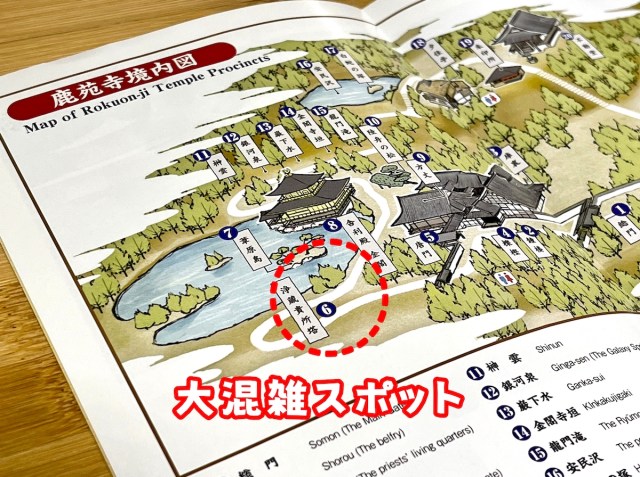
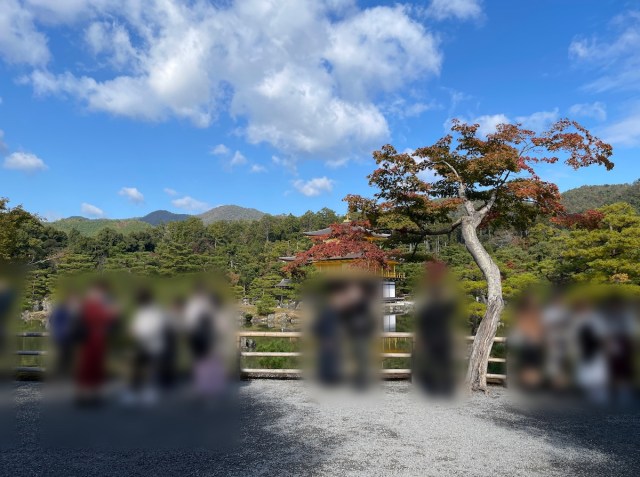
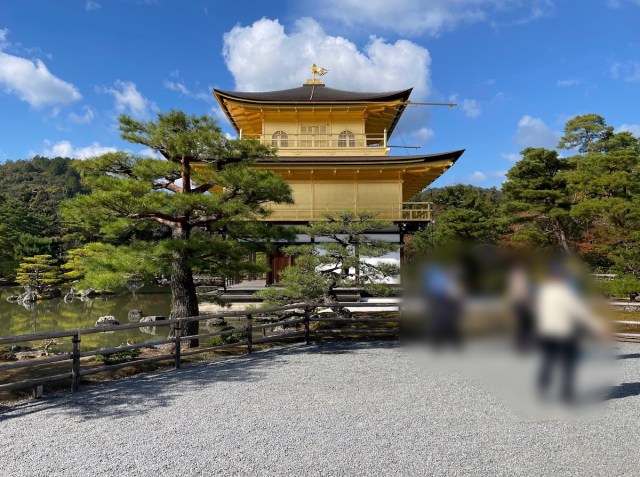
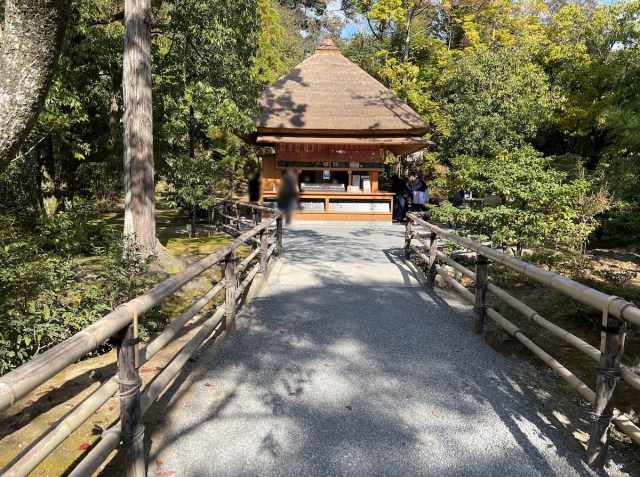
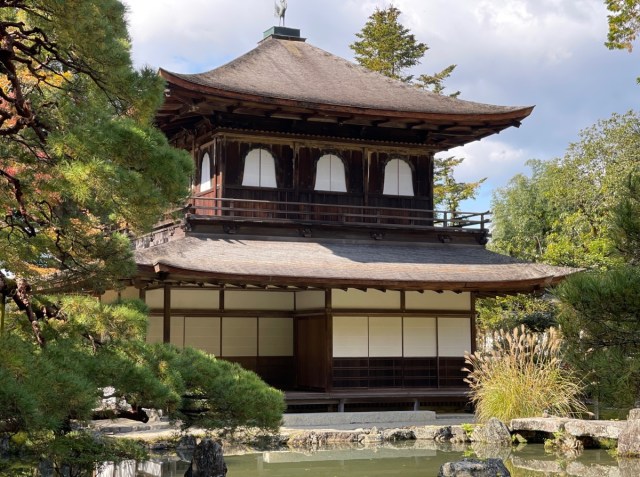
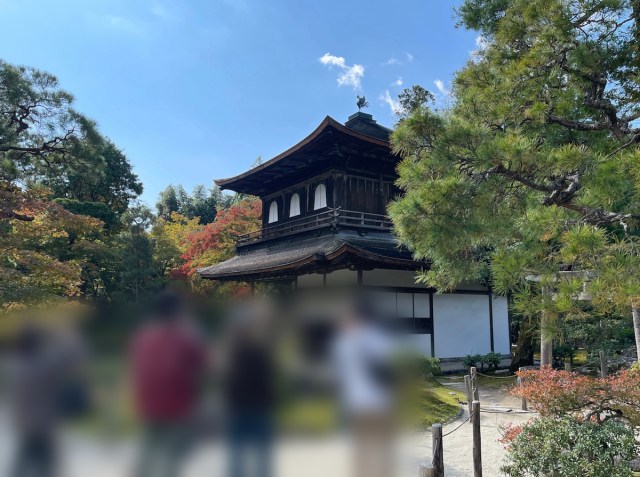
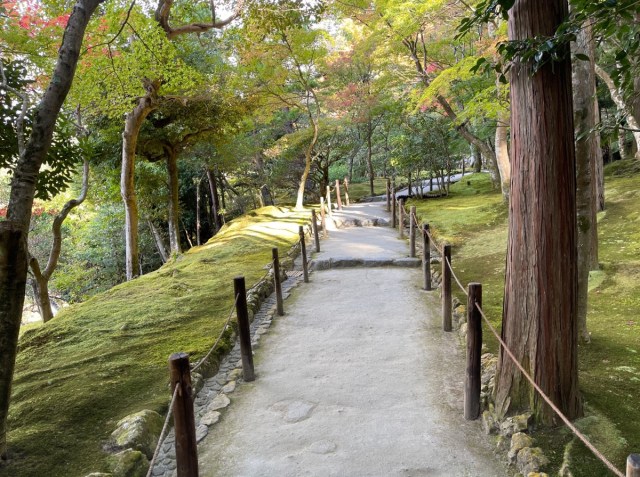
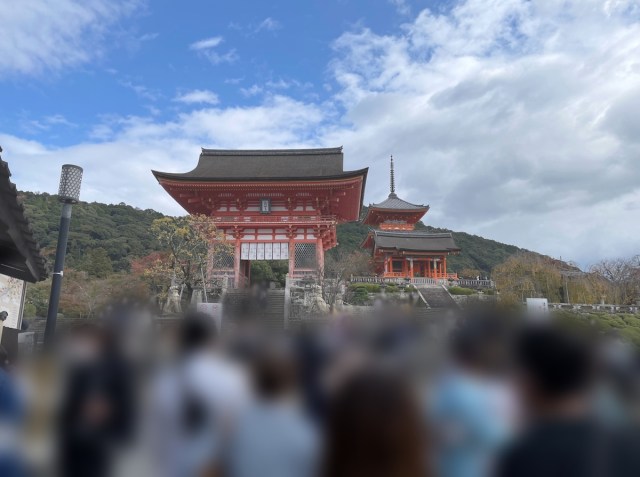
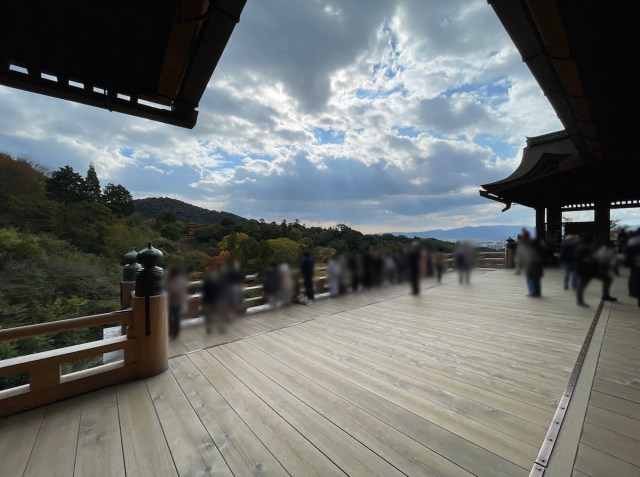
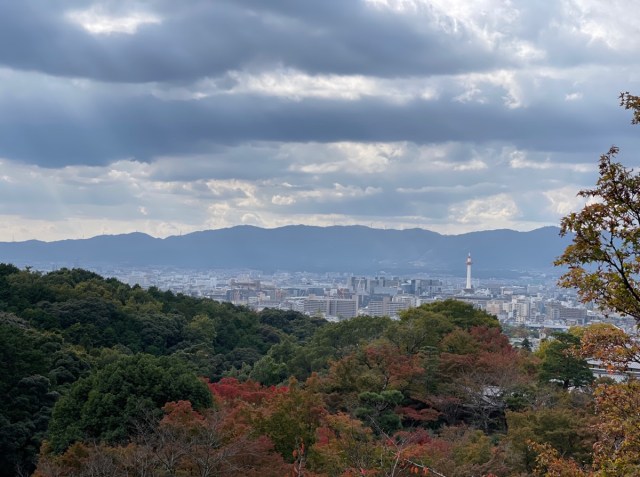
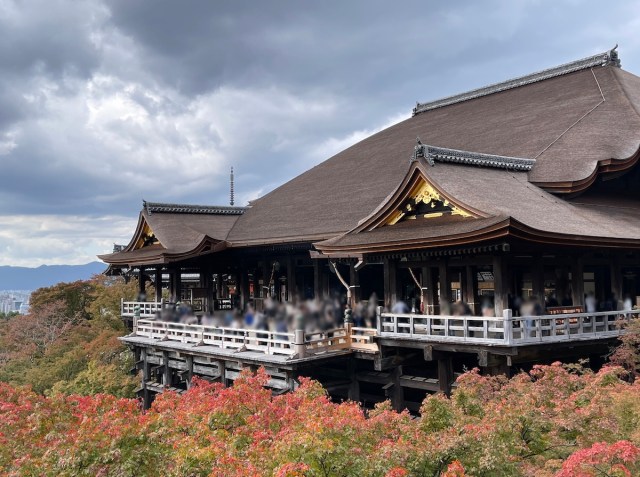
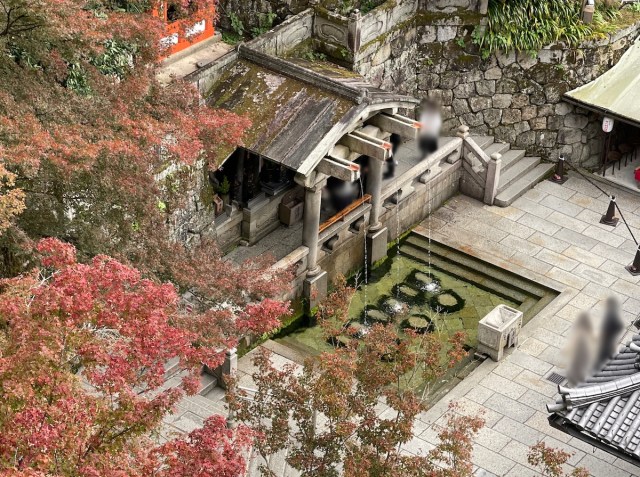
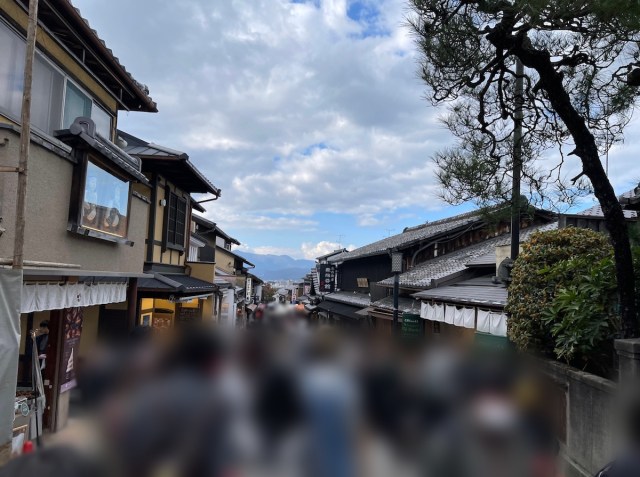
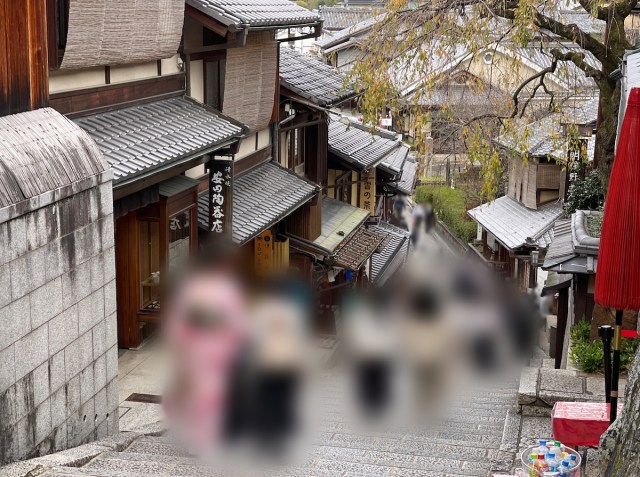
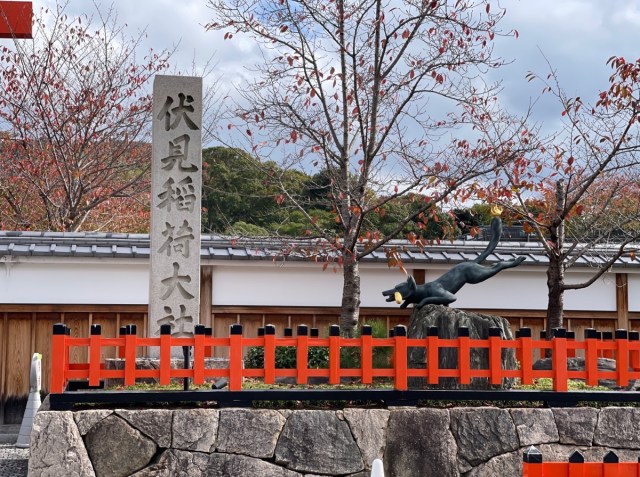
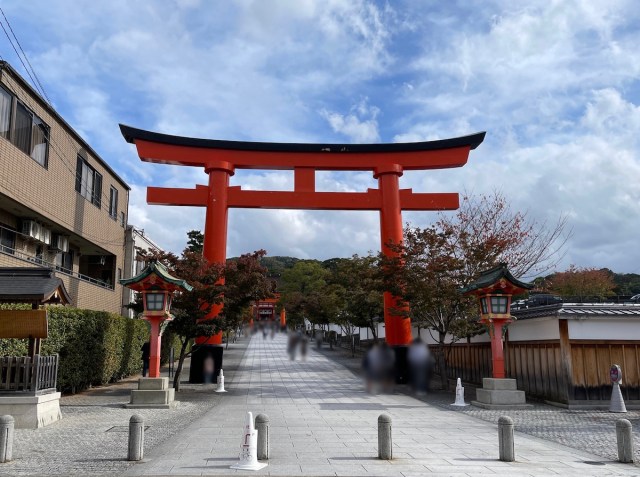
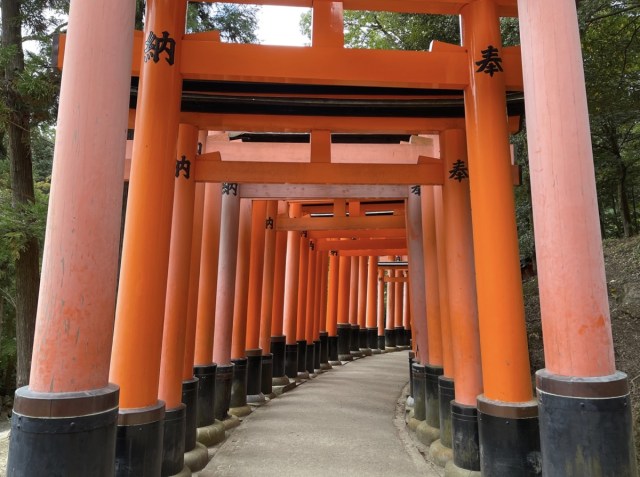
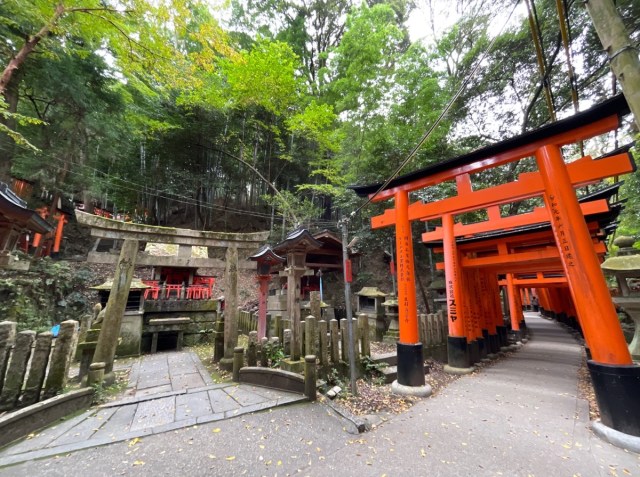
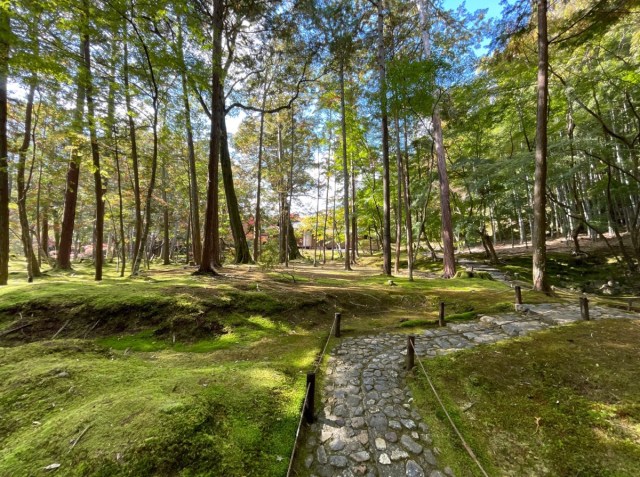
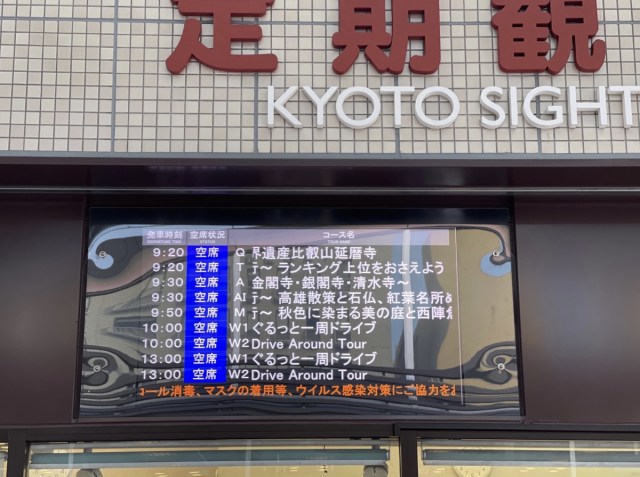
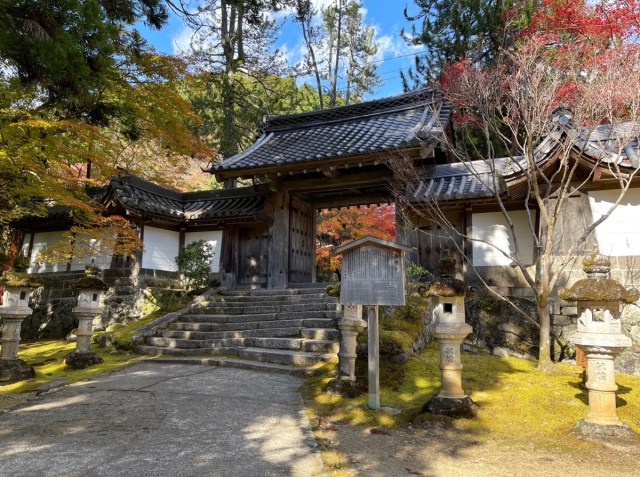
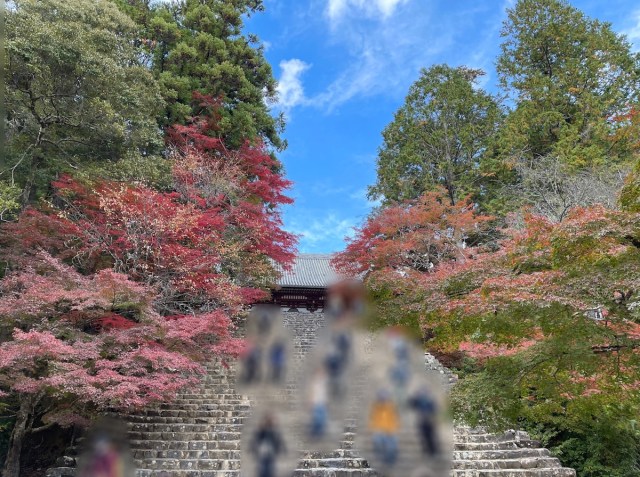
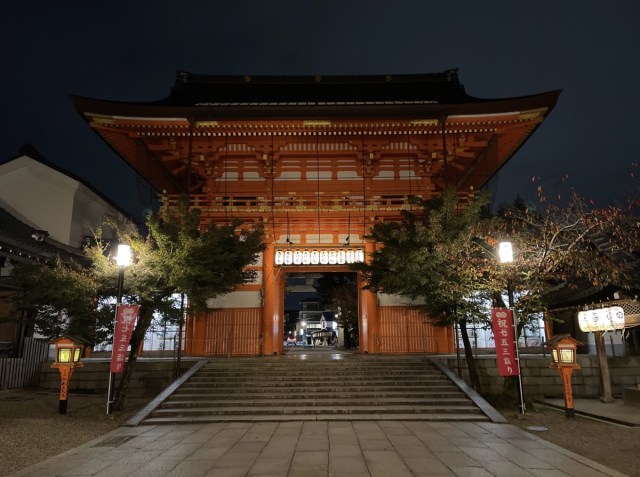
 Kyoto tourist crowds disappearing due to coronavirus outbreak, creating travel crisis/opportunity
Kyoto tourist crowds disappearing due to coronavirus outbreak, creating travel crisis/opportunity Explore Kyoto tourist site Fushimi Inari Taisha shrine with Unreal Engine 4 【Video】
Explore Kyoto tourist site Fushimi Inari Taisha shrine with Unreal Engine 4 【Video】 Kyoto temple bans photography at famous autumn foliage viewing spots
Kyoto temple bans photography at famous autumn foliage viewing spots Magical train ride through Japan’s autumn leaves is like travelling to a different world【Video】
Magical train ride through Japan’s autumn leaves is like travelling to a different world【Video】 Japan’s 30 best travel destinations, as chosen by overseas visitors
Japan’s 30 best travel destinations, as chosen by overseas visitors Red light district sushi restaurant in Tokyo shows us just how wrong we were about it
Red light district sushi restaurant in Tokyo shows us just how wrong we were about it Pokémon Sleep camping suite and guestrooms coming to Tokyo Hyatt along with giant Snorlax burgers
Pokémon Sleep camping suite and guestrooms coming to Tokyo Hyatt along with giant Snorlax burgers Beautiful Red and Blue Star luxury trains set to be Japan’s new Hokkaido travel stars
Beautiful Red and Blue Star luxury trains set to be Japan’s new Hokkaido travel stars Akihabara pop-up shop sells goods made by Japanese prison inmates
Akihabara pop-up shop sells goods made by Japanese prison inmates Starbucks Japan adds a Motto Frappuccino to the menu for a limited time
Starbucks Japan adds a Motto Frappuccino to the menu for a limited time Anime girl English teacher Ellen-sensei becomes VTuber/VVTUber and NFT
Anime girl English teacher Ellen-sensei becomes VTuber/VVTUber and NFT Tokyo Tsukiji fish market site to be redeveloped with 50,000-seat stadium, hotel, shopping center
Tokyo Tsukiji fish market site to be redeveloped with 50,000-seat stadium, hotel, shopping center McDonald’s new Happy Meals offer up cute and practical Sanrio lifestyle goods
McDonald’s new Happy Meals offer up cute and practical Sanrio lifestyle goods French Fries Bread in Tokyo’s Shibuya becomes a hit on social media
French Fries Bread in Tokyo’s Shibuya becomes a hit on social media All-you-can-drink Starbucks and amazing views part of Tokyo’s new 170 meter-high sky lounge
All-you-can-drink Starbucks and amazing views part of Tokyo’s new 170 meter-high sky lounge More foreign tourists than ever before in history visited Japan last month
More foreign tourists than ever before in history visited Japan last month Japanese ramen restaurants under pressure from new yen banknotes
Japanese ramen restaurants under pressure from new yen banknotes Studio Ghibli releases new action figures featuring Nausicaä of the Valley of the Wind characters
Studio Ghibli releases new action figures featuring Nausicaä of the Valley of the Wind characters New private rooms on Tokaido Shinkansen change the way we travel from Tokyo to Kyoto
New private rooms on Tokaido Shinkansen change the way we travel from Tokyo to Kyoto Starbucks reopens at Shibuya Scramble Crossing with new look and design concept
Starbucks reopens at Shibuya Scramble Crossing with new look and design concept Studio Ghibli glasses cases let anime characters keep an eye on your spectacles
Studio Ghibli glasses cases let anime characters keep an eye on your spectacles Beautiful Ghibli sealing wax kits let you create accessories and elegant letter decorations【Pics】
Beautiful Ghibli sealing wax kits let you create accessories and elegant letter decorations【Pics】 Studio Ghibli releases Kiki’s Delivery Service chocolate cake pouches in Japan
Studio Ghibli releases Kiki’s Delivery Service chocolate cake pouches in Japan New definition of “Japanese whiskey” goes into effect to prevent fakes from fooling overseas buyers
New definition of “Japanese whiskey” goes into effect to prevent fakes from fooling overseas buyers Our Japanese reporter visits Costco in the U.S., finds super American and very Japanese things
Our Japanese reporter visits Costco in the U.S., finds super American and very Japanese things Studio Ghibli unveils Mother’s Day gift set that captures the love in My Neighbour Totoro
Studio Ghibli unveils Mother’s Day gift set that captures the love in My Neighbour Totoro New Japanese KitKat flavour stars Sanrio characters, including Hello Kitty
New Japanese KitKat flavour stars Sanrio characters, including Hello Kitty New Pokémon cakes let you eat your way through Pikachu and all the Eevee evolutions
New Pokémon cakes let you eat your way through Pikachu and all the Eevee evolutions Disney princesses get official manga makeovers for Manga Princess Cafe opening in Tokyo
Disney princesses get official manga makeovers for Manga Princess Cafe opening in Tokyo Sales of Japan’s most convenient train ticket/shopping payment cards suspended indefinitely
Sales of Japan’s most convenient train ticket/shopping payment cards suspended indefinitely Sold-out Studio Ghibli desktop humidifiers are back so Totoro can help you through the dry season
Sold-out Studio Ghibli desktop humidifiers are back so Totoro can help you through the dry season Japanese government to make first change to romanization spelling rules since the 1950s
Japanese government to make first change to romanization spelling rules since the 1950s Ghibli founders Toshio Suzuki and Hayao Miyazaki contribute to Japanese whisky Totoro label design
Ghibli founders Toshio Suzuki and Hayao Miyazaki contribute to Japanese whisky Totoro label design Doraemon found buried at sea as scene from 1993 anime becomes real life【Photos】
Doraemon found buried at sea as scene from 1993 anime becomes real life【Photos】 Tokyo’s most famous Starbucks is closed
Tokyo’s most famous Starbucks is closed One Piece characters’ nationalities revealed, but fans have mixed opinions
One Piece characters’ nationalities revealed, but fans have mixed opinions We asked a Uniqlo employee what four things we should buy and their suggestions didn’t disappoint
We asked a Uniqlo employee what four things we should buy and their suggestions didn’t disappoint Princesses, fruits, and blacksmiths: Study reveals the 30 most unusual family names in Japan
Princesses, fruits, and blacksmiths: Study reveals the 30 most unusual family names in Japan Arashiyama bamboo forest in Kyoto “crying” as tourists vandalise trees
Arashiyama bamboo forest in Kyoto “crying” as tourists vandalise trees Japanese photographer captures the beauty of Kyoto in the snow 【Photos】
Japanese photographer captures the beauty of Kyoto in the snow 【Photos】 The number 1 ‘most satisfying’ city in the world is….TOKYO!!!
The number 1 ‘most satisfying’ city in the world is….TOKYO!!! Should you get up early to see the sakura cherry blossoms in Tokyo?
Should you get up early to see the sakura cherry blossoms in Tokyo? Five reasons not to live in Japan (as chosen by Switzerland’s perviest otaku)
Five reasons not to live in Japan (as chosen by Switzerland’s perviest otaku) Ninja Castle in Tokyo has heartwarming message for foreign tourists in midst of coronavirus
Ninja Castle in Tokyo has heartwarming message for foreign tourists in midst of coronavirus Kyoto may be getting more modern, tall buildings as city relaxes development limits
Kyoto may be getting more modern, tall buildings as city relaxes development limits Don’t let the rain get you down! Here are Japan’s top 10 most beautiful rainy day travel spots
Don’t let the rain get you down! Here are Japan’s top 10 most beautiful rainy day travel spots Sakura in Japan 2019: The best spots for hanami cherry blossom viewing
Sakura in Japan 2019: The best spots for hanami cherry blossom viewing Nine things that may shatter your dreams of living in Kyoto
Nine things that may shatter your dreams of living in Kyoto Three reasons you should go to Kyoto right now
Three reasons you should go to Kyoto right now Secret Tokyo night view spot is also a great meeting place away from the crowds
Secret Tokyo night view spot is also a great meeting place away from the crowds Restaurants, Roads, Rats: How has Tsukiji changed after the fish market move?
Restaurants, Roads, Rats: How has Tsukiji changed after the fish market move? Nara deer leave park, head to station for food as tourist numbers tumble due to coronavirus
Nara deer leave park, head to station for food as tourist numbers tumble due to coronavirus Travel around Japan with stunning videos from the 4K ultra HD video library
Travel around Japan with stunning videos from the 4K ultra HD video library
Leave a Reply